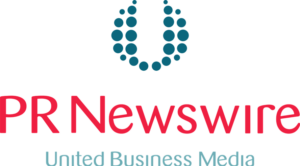Public Relations (PR) and its role in business growth
Public relations (PR) is the practice of managing a company’s reputation and image to build trust, and credibility and promote awareness. PR is an important tool for business growth because it allows companies to reach their target audience through journalist interviews, news coverage and other forms of media. PR strategies can take many forms but they all focus on getting your name out there to make an impact with key stakeholders such as journalists or influencers who write about industry trends or topics at large.
Public relations is a strategic marketing tool that helps businesses connect with their target audiences. It’s also an excellent way to build relationships with the media and influencers, which in turn can help you get your message out to the public.
As a business owner, you must understand how PR works and what it can do for your company.
Understanding the target audience and identifying their needs
Once you’ve determined the need, it’s time to understand who will be buying. You can do this by using the following questions:
-
Who are my target customers or clients?
-
What do they buy? (i.e., what products and services do they use?)
-
How did they come across my business?
Developing a PR strategy that aligns with business goals
A PR strategy is a plan for how you will use PR to achieve your business goals.
To be successful, the PR strategy should be aligned with the overall marketing plan and aligned with each of the company’s departments.
The goal is not just to have a good story but also one that can be repeated over time so that it becomes part of their public persona or brand image.
Building relationships with key journalists, influencers, and media outlets
Building relationships with key journalists, influencers, and media outlets is one of the most important aspects of PR. If you want to make sure your business gets the coverage it deserves, you need to build a rapport with these folks. This can be done in many ways:
-
Be authentic. People trust those who are honest about themselves and what they do in life—and this applies as much to journalists as anyone else! You’ll have more success if you’re genuinely motivated by helping others or have a passion for your field of work (or both). The best way to demonstrate authenticity is by being transparent about yourself and sharing information about yourself that people value—but don’t give anything away too soon—because people will assume certain things about you based on those initial reactions alone! For example: if someone asks me what I do for fun outside of work then my answer might include “I love playing tennis every weekend” because tennis is something I enjoy doing outside work hours but may not sound like something someone would care much about knowing unless asked directly beforehand.”
Crafting compelling stories and messages that resonate with the target audience
Good PR stories are the foundation of your company’s reputation. As you know, people are inherently curious about what others think about them, and a well-crafted story can go a long way toward winning over new customers or clients.
To write the best possible PR story for your company:
-
Understand that stories resonate with audiences more than facts do—and they don’t need to be long (or complex).
-
Find ways to tell your message in an entertaining way that packs an emotional punch.
-
Be sure it reflects who you are as a brand—what makes you different from other companies? How can you use this differentiation to connect with potential customers?
Building a strong brand image and reputation through consistent PR efforts
Building a strong brand image and reputation through consistent PR efforts is vital to the success of your business.
Reputation is built over time, as you have more and more experiences with customers, employees, and partners. Reputation is also built through consistent PR efforts: if you publish articles in magazines or blogs that are relevant to your industry, they will be seen by potential customers who can then decide whether or not they want to engage with your company. Another way of building a reputation is by delivering high-quality services that meet expectations; this will make people want to buy from you again because their experience was positive enough for them not only to consider buying from you again but also to recommend it to others!
Finally (and perhaps most importantly), consistency in action matters tremendously when it comes down to everything else being equal.”
Utilizing crisis communication plans to mitigate negative publicity
-
Be prepared for crises.
-
Have a plan in place to respond quickly.
-
Communicate with the media and the public.
-
Manage the situation promptly, and don’t make it worse by being defensive or aggressive.*
Continuously monitoring and adjusting the PR strategy to align with changing business goals and audience needs.
You must continually monitor and adjust your PR strategy to align with changing business goals and audience needs.
This is especially true when you’re starting, as it can be difficult to predict what kind of impact your new product or service will have on an industry. In these instances, it’s important that you keep an open dialogue with stakeholders who are involved in the marketing process—and make sure that everyone knows about any changes being made (e.g., whether or not a new product launch is happening).
Once again: remember that no two businesses are exactly alike!
I hope this post has given you a better understanding of how PR can be used to grow your business. The key takeaway is to always keep an eye on what your target audience needs and how that aligns with the goals of your organization as well as other key stakeholders. If you’re not sure where to start, then consider reaching out to one of our experienced professionals at [email protected]
- jamessthephen@gmail.com
- https://www.prwires.com
- pr wires
- pr wire
- United States








